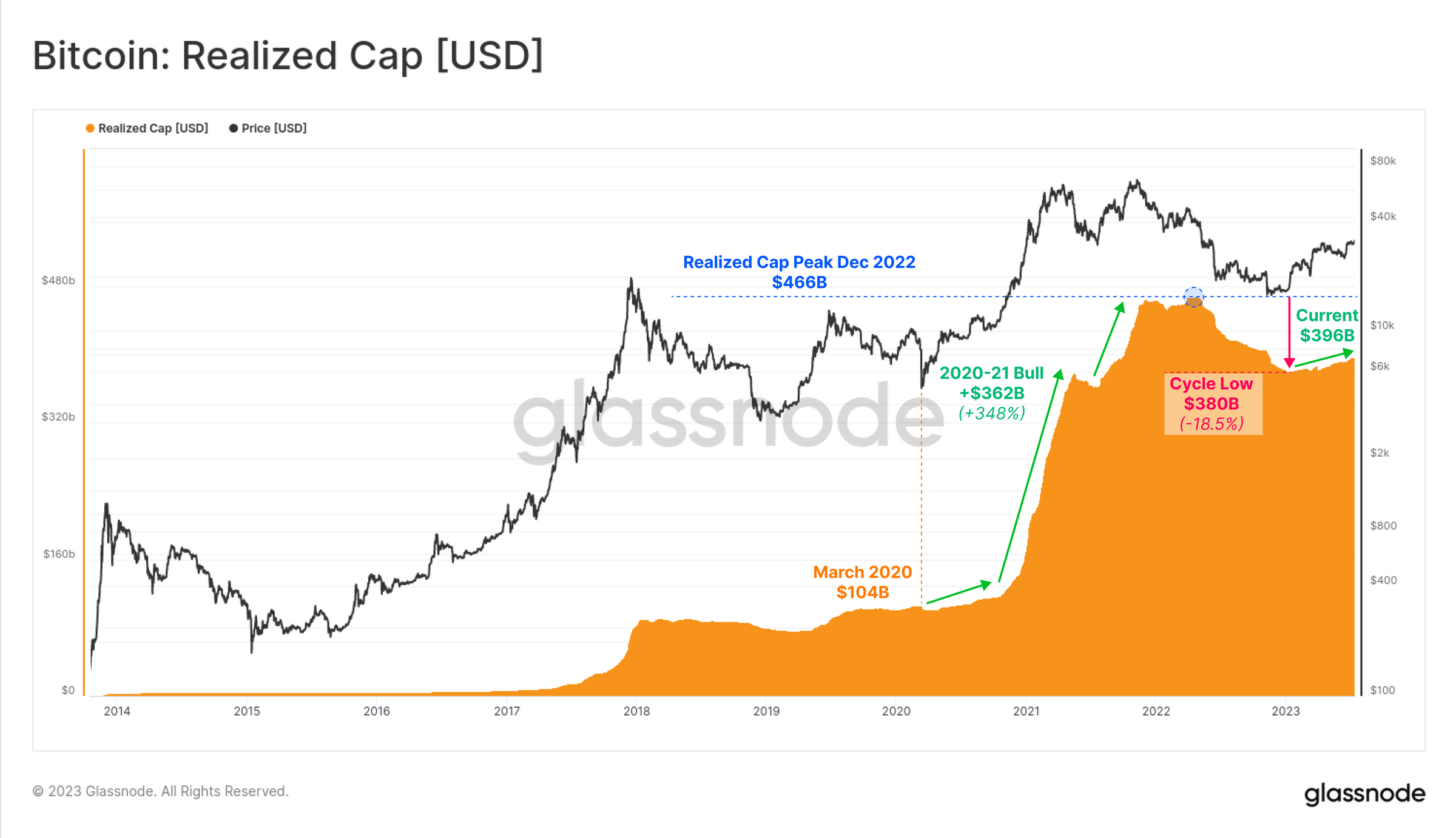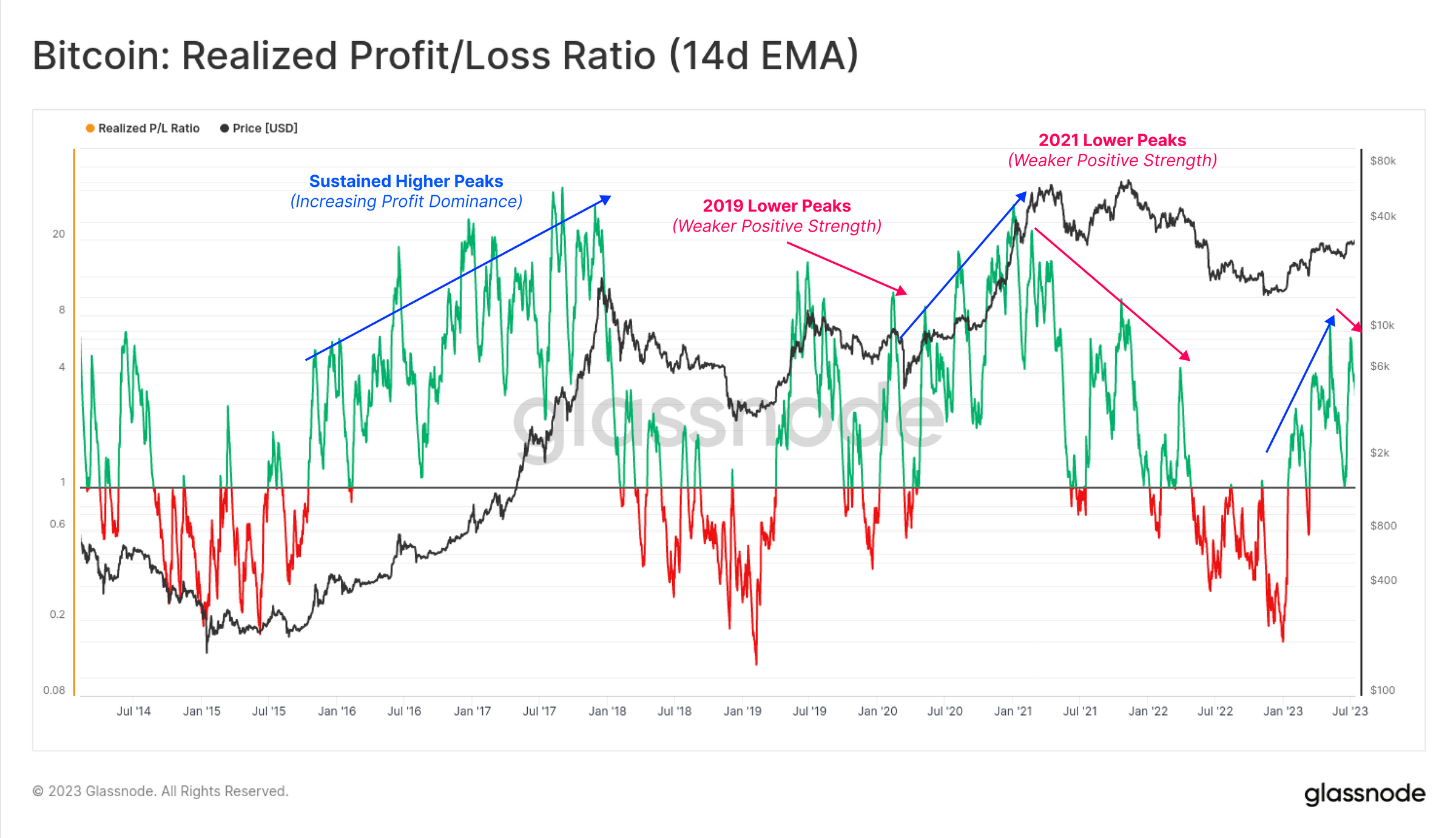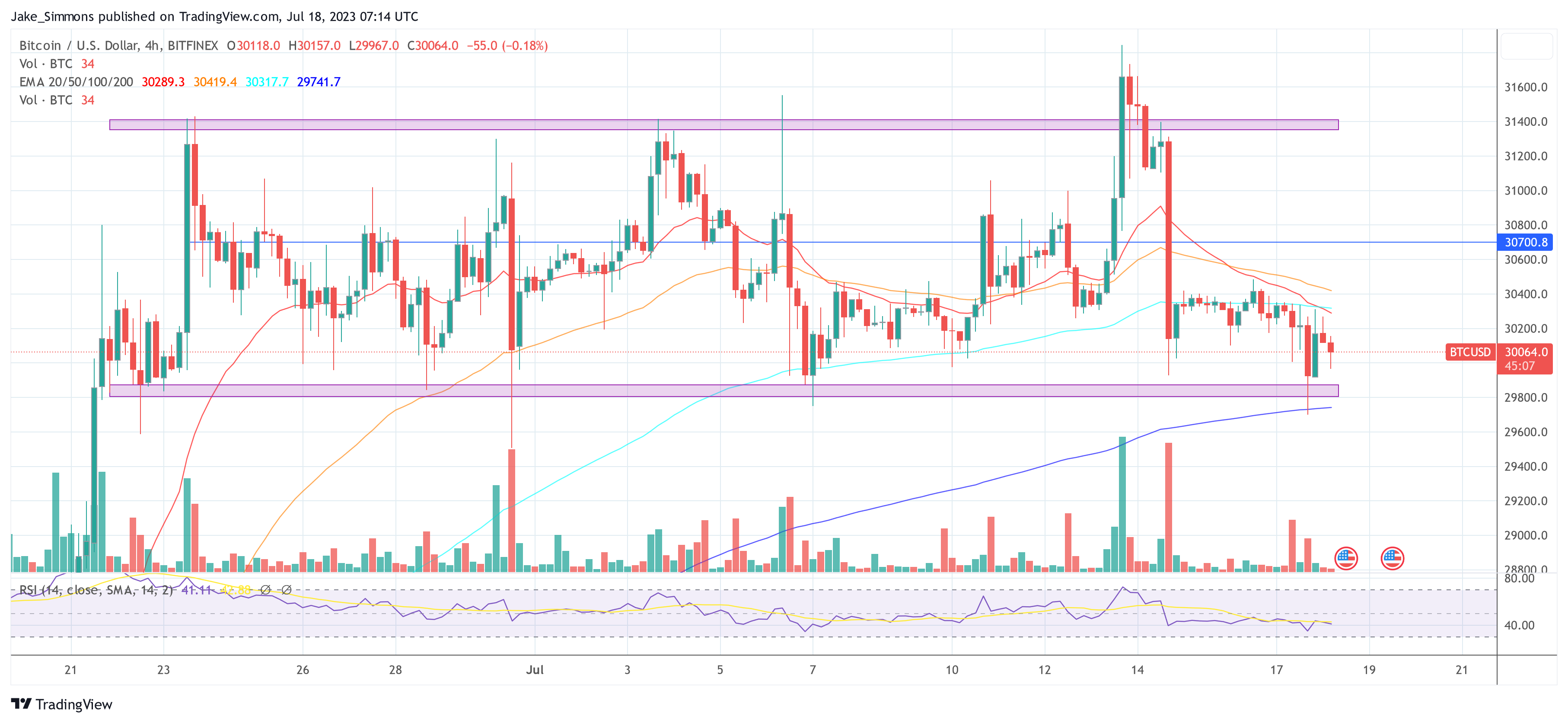Bitcoin’s price has fallen to the low end of its nearly month-long trading range between $29,800 and $31,300. Just yesterday, BTC fell briefly to $29,704, before recovering to $30,306 within hours. At the time of writing, BTC was moving back towards the USD 30,000 mark, and another drop and liquidity grab seems likely.
While macro data releases have been fairly quiet this week, it’s worth taking a look at what’s happening in the Bitcoin market itself.
Why is Bitcoin down today?
Swissblock Insights noticed a curious calm in the market as Bitcoin hit a new annual high of $31,840 last week. However, momentum quickly faded and selling pressure mounted, causing BTC to plummet to the low $30k. They emphasize the narrow Bollinger Bands, saying, “The Bollinger Bands are very narrow, with only a 4.2% difference in value between the upper and lower bands. A move is brewing.”
In addition, the analysts emphasize the need for a major catalyst to breathe life into the current bland scenario:
Volatility is expected to enter the scene, although we are in no man’s land in the near term; liquidity remains low, open rates are still flat and shorts are nowhere to be seen. There is no command in the direction we are going, and only a significant catalyst can brighten things up in this dull scenario we are in.
According to the analysts, a breakdown of the $29,650 support level would invalidate a long setup. On the other hand, a bullish leg up to USD 31,500 could fuel momentum and push the price towards USD 33,000. But for this to happen, spot demand must rebound strongly and longs must enter the market, “otherwise momentum will continue to decline.”
Glassnode, an on-chain data provider, continues illuminated the current state of the Bitcoin market. Despite the temporary annual high, they describe the market as “extremely calm”, also pointing to the Bollinger Bands. This compression of volatility points to a market reminiscent of the calm observed in early January, as NewsBTC reported yesterday.
In addition, Glassnode’s analysis reveals a slow but steady inflow of capital into Bitcoin. The realized cap is currently just shy of $396 billion. After hitting a cycle low of $380 billion, the metric indicates a slow but steady flow of capital into the market in 2023.

Glasnode also emphasizes that investors are unwilling to part with their stock, resulting in choppy market conditions similar to those experienced in 2016 and 2019-2020. Total realized profit and loss resembles the historical trend:
If we take a ratio between total realized profit and loss, […] we can also note that a lower high in this ratio has been set this week. If it continues, it could point to similar choppy market conditions in both 2019-2020 and again in the second half of 2021.

The analysis also highlights the profit-locking behavior among Bitcoin holders, with the majority of both holders’ short-term (88%) and long-term (73%) balances held in profit. However, short term holders are the main entities operating in the market.
Of the total 39,600 BTC in daily exchange inflow, 78% of this is associated with the STH cohort. This means that short-term holders will have to cut profits for the time being before the selling pressure eases and the bulls can regain the upper hand.
GreekLive, an options expert, explains that the Bitcoin market is still losing liquidity, making it highly susceptible to spikes and V-shaped recoveries:
Cryptocurrencies encountered a V-shaped market today, with BTC falling below $29,700 and ETH below $1,875, before bouncing back into a V-shape during Asian trading hours to regain the round number of points, but the options market hardly reacted to this .
The analysis advises sellers to focus on static protection and have risk management plans in place for holding options to expiration. For buyers, taking profits early and using futures to hedge options are recommended risk management strategies.
At the time of writing, BTC was trading at USD 30,064.

Featured image from iStock, chart from TradingView.com

